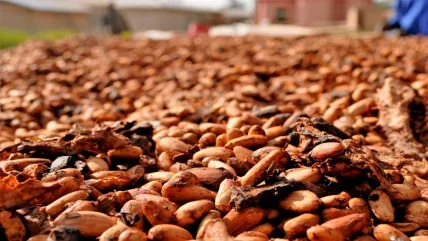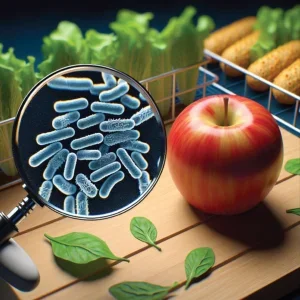
The supply chain that lies behind the production of chocolate, one of the world’s favourite confections, spans the globe and is shaped by powerful forces of supply and demand. The changing habits of customers define the direction of product innovation, and addressing the pressures on farmers growing cocoa beans is central to maintaining a reliable supply of raw ingredients. Add to this the volatility of global food prices plus the concerns over food security, and the story of chocolate becomes a complex one.
At the consumer end of the chain, there are many diverse trends at work as tastes and attitudes change. Most obviously, value is increasingly important and there has been a big rise in the number of product launches that promote value through competitive pricing. Equally significant, however, are changes in the way people view and consume chocolate products.
Tied in with the focus on value, there is a marked decline in how often consumers eat out, although they are more likely to indulge in luxurious products at home. As a result, there is growing demand for premium chocolate products that place more emphasis on the origin of the cocoa beans and on higher quality.
Another emerging trend, which has been dubbed the ‘new relaxation paradigm’, has seen more products claiming to provide energy in the morning or have a relaxing effect in the evening. For the latter, the marketing messages are strongly centred on concepts such as bliss, harmony or calm. Chocolate products are increasingly formulated to suit certain times of day as ways to stimulate or relax.
New products have also emerged to meet the needs of consumers who want to combine pleasure and health. Some have, for instance, blended antioxidant qualities and ‘superfruits’ with dark chocolate, incorporated the health credentials of fruit or even added vegetable flavours.
These trends suggest the emergence of new consumer categories. Some want a bit of gourmet luxury every day so seek premium products; others prefer plant and herbal extracts as ingredients for their antioxidant properties. There are those that prioritise organic ingredients, while others like intense tastes so purchase chocolate that contains high cocoa content and strong flavours such as coffee, and want products that are made with minimal processing.
Furthermore, there are the ‘savvy slimmers’ who want low-sugar or sugar-free products, which has resulted in the growing use of alternative sweeteners such as Stevia. Then there are the lovers of fresh food, who buy products with a fresh, homemade appeal.
These changing demand patterns are all relevant to the Western world, but growing populations and rising wealth in developing nations are being keenly watched by producers of all foods, not just of those that contain the cocoa bean.
"Hundreds and millions of people from 1998 to 2007 saw better diets and incomes rising, and could eat meat occasionally. All of these people were lifted out of poverty to join the middle class," says Paul Conway, vice-chairman of global food company Cargill. "This led to an increase in food consumption, that’s why you see estimates of a 30% increase in population and a 60-70% increase in demand for food, because of the nature of the food changes. There is more of an intense diet."
The company, which is celebrating its 147th year, is a leading producer and marketer of food and agricultural products. As such, its actions are indicative of the sector’s response to not only changing consumer tastes, but also the pressure of the global economy and movement in world demographics. It has had to respond to what Conway describes as a "volatile industry".
"It was a pretty rough year," he states. "Being private we think helps because this is a long term-industry, [but] in order to remain private, we need to be balanced, diverse and resilient. That means having a business mix, taking the long view and sticking to principles."
As part of its diversified strategy, Cargill consistently invests in new capabilities, and this is true of its cocoa and chocolate business, which is behind the launch of a range of new chocolate flavours. Among these are brands with mocha and hazelnut pastes, an authentic gianduja and a new caramel filling and coating.
This is partly the result of the firm developing two new processes to incorporate strong flavours such as coffee in a consistent way, which has previously been very difficult for chocolate manufacturers. The move is in response to a marked increased in the demand for coffee-flavoured confectionery, of which 834 brands were launched in 2010 compared with only 378 in 2008.
Sustainable supply chain
At the other end of the supply chain lie the producers, mainly located in developing countries such as Ivory Coast and the Dominican Republic. For these producers – and for a growing number of consumers – the key priority is sustainability. For chocolate, this means focusing on ethical sourcing, greater transparency along the supply chain, and an emphasis on the working conditions and profits for cocoa bean farmers.
Consumers increasingly want to see products labelled Rainforest Alliance or UTZ certified, which testifies to sustainable production policies. Producers such as Cargill have recognised this trend and have responded with a range of new products, which have been well received.
"It’s going pretty well," says Conway. "We have a product called UTZ cocoa – UTZ is the classification of it. We also do the same with palm oil with sustainable palm; there is a demand in Europe for that."
He continues: "When the demand for sustainability came up we asked ‘what does that mean?’ In response we would get, ‘well, just give us a certificate’. We have said, ‘no we don’t do that, but let’s talk about the whole supply chain, and how you want to define it’. What we want to avoid is having seven different definitions of sustainability.
"The UK minister of agriculture said to me 15 years ago that people have a right to know what’s in their food, how it’s been made and where it’s from. Unfortunately, most consumers are totally divorced from where their food comes from. There have been studies that have proven that some children don’t associate milk with cows. There’s a big disconnect with the Western consumer and where their food comes from.
"People have this image of some 19th century way food is produced. Food is produced very efficiently, it is an industry, and when that is revealed to consumers they tend not to like it very much. The industry has to tell its story better, and has to have a better story to tell," he adds.
In order to tell that story, Cargill has launched initiatives to make the supply chain far more transparent to consumers.
Conway explains: "We have noticed in this calendar year that some of the major consumer product companies we supply are discussing sustainability, about linking, as part of their marketing, the consumer with the farmer. Our view is there is no such thing as a bad food – every food has a place, but it’s all about in moderation. For example, we are working on sodium-reduction systems, but most of what we do with regards to educating consumers is work with trade associations."
Alongside its efforts to educate consumers, Cargill has made sustainability central to its global sourcing strategy, and the Cargill Sustainable Cocoa Programme aims to not only secure the long-term sustainability of cocoa production, but also improve the lives of cocoa farmers and their families.
The programme focuses on teaching farmers sustainable agricultural practices and introducing more business transparency to enable them to improve yields and increase their income.
Farmer Field Schools
Farmer Field Schools train farmers in the best agricultural practices. The farmers in cooperatives receive tools and training in a ten-month course run over four years, which includes the care of cocoa trees, preventive disease control, post-harvest treatment and bookkeeping and also covers personal health and social issues.
On average, the training delivers a 30% increase in income, while it also makes more farmers eligible for sustainable certification. In the first two years after the certification of pilot cooperatives in 2008, farmers in Ivory Coast received $8.7 million in certification premiums from Cargill, over half of which went directly to them while the remainder was invested by the cooperatives to support members and their families.
Farmers’ organisations
Support for farmers’ organisations is an aspect of the programme that works to establish financial assistance for cooperatives to fund certification managers, who bring administrative and governance expertise. There is also support for up-country buying stations close to the cooperatives and for not-for-profit farmers’ organisations that not only provide market price information and knowledge-sharing services, but can also act as local banks.
This year in Ivory Coast alone, Cargill’s training aims to reach 60,000 farmers through its network of 1,100 farmer field schools, and it is working towards a target of 100,000t of certified sustainable cocoa beans from the country by 2015.
Support and shared experience
Cocoa Community Support runs programmes that support better education and healthcare among farmers. This has, for instance, brought a kindergarten to Bu Dang village in Vietnam and an orphanage to Soubré in Ivory Coast. In all, 56 schools have been built in Vietnam.
Cargill works with local governments and state agencies, as well as international NGOs, to share expertise. Such efforts are indicative of the industry’s understanding of the pressures on cocoa bean farmers. Around 70% of the world’s cocoa crop comes from West Africa, where transport infrastructure is poor and vehicles are expensive to maintain. Access to fresh water, healthcare, education and financial infrastructure is also limited. A sustainable supply of cocoa, which is especially vulnerable at times of volatile prices and concerns over global food security, depends on these challenges being overcome.
"You can define food sufficiency and food security as having enough food in the world, available to people at a reasonable price," says Conway. "Food security only really became a hot topic after the price rises in 2008. We were getting numerous requests to talk to all sorts of groups about it. We chose to be more public about it than traditionally we had been because there was a danger at that time that various actors including governments would react in a way that wasn’t helpful – after the 2008 price rise, we had well over 20 governments instituting some form of export ban, price controls and so on, which actually made the problem worse. If governments are worried about being able to afford it there are much more effective ways, like direct subsidy, rather than saying they won’t allow the price of eggs to go up, because that’s no incentive for the farmers to grow more.
"So we thought if we don’t speak up and say that food security is not the same as food self-sufficiency in order to get food security, then who would? So the things we are doing on the ground haven’t changed, but we are being more vocal about it."
Whether it is price trends, changing consumer behaviour or the many pressures faced by cocoa farmers around the world, companies such as Cargill accept the challenges and, to a large degree, are meeting them head on.






